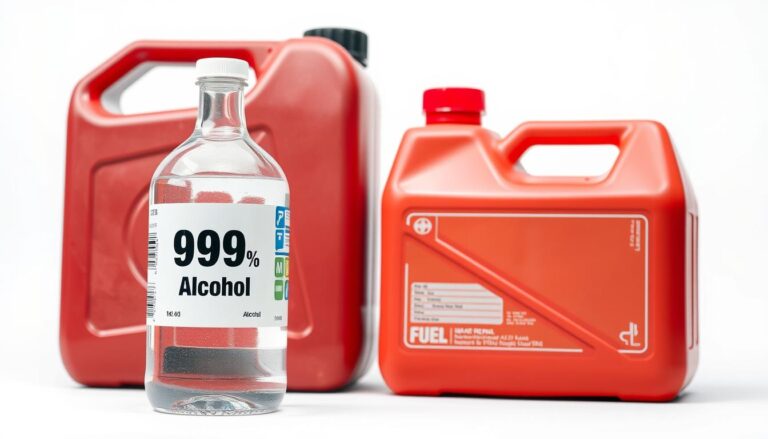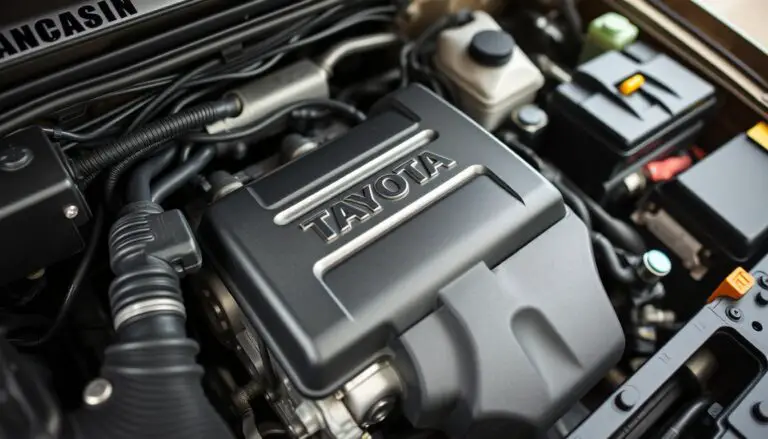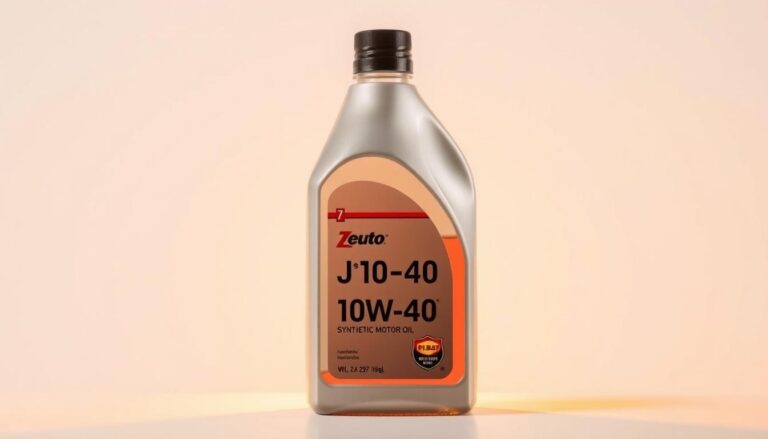The Buick LaCrosse is a popular vehicle known for its comfort and performance. One crucial aspect of maintaining its performance is ensuring the transmission fluid is at the correct level. Transmission fluid plays a vital role in the smooth operation of the vehicle’s transmission system, affecting its overall longevity and efficiency.
Understanding the transmission fluid capacity is essential for vehicle owners to perform routine maintenance and avoid costly repairs. This article will delve into the specifics of the transmission fluid capacity for the Buick LaCrosse, providing valuable insights for owners and enthusiasts alike.
Key Takeaways
- Importance of maintaining correct transmission fluid levels in Buick LaCrosse.
- Role of transmission fluid in vehicle performance and longevity.
- Specifics on transmission fluid capacity for Buick LaCrosse models.
- Tips for checking and maintaining transmission fluid.
- Consequences of neglecting transmission fluid maintenance.
The Critical Role of Transmission Fluid in Buick LaCrosse
Maintaining the right transmission fluid is crucial for the longevity and performance of your Buick LaCrosse’s transmission. Transmission fluid serves as a lubricant, a coolant, and a hydraulic fluid that enables the transmission to operate smoothly.
How Transmission Fluid Affects Vehicle Performance
The quality and level of transmission fluid significantly impact the Buick LaCrosse’s performance. Proper transmission fluid ensures smooth gear shifting, reduces wear on transmission components, and prevents overheating. Key aspects affected by transmission fluid include:
- Smooth acceleration and gear transitions
- Prevention of transmission wear and damage
- Maintenance of optimal transmission temperature
Impact on Transmission Longevity and Reliability
The transmission fluid’s condition directly influences the lifespan of the transmission. Degraded or insufficient fluid can lead to premature wear, increased risk of transmission failure, and costly repairs. Regular checks and maintenance of transmission fluid are essential to extend the life of your Buick LaCrosse’s transmission.
Buick LaCrosse Transmission Fluid Capacity Specifications
The Buick LaCrosse requires specific transmission fluid capacities, which vary by model year and transmission type. Understanding these specifications is crucial for maintaining the vehicle’s performance and longevity.
First Generation (2005-2009) Models
For the first generation of Buick LaCrosse, the transmission fluid capacity varies based on the transmission type.
4-Speed Automatic Transmission Capacity
The 4-speed automatic transmission in early models typically requires approximately 7.4 quarts of transmission fluid.
6-Speed Automatic Transmission Capacity
Later models within this generation that came equipped with a 6-speed automatic transmission usually need about 8.2 quarts of transmission fluid.
Second Generation (2010-2016) Models
The second generation Buick LaCrosse, which includes models from 2010 to 2016, primarily featured a 6-speed automatic transmission.
6-Speed Automatic Transmission Capacity
For these models, the recommended transmission fluid capacity is around 7.6 quarts.
Third Generation (2017-2019) Models
The third generation introduced a more advanced 9-speed automatic transmission.
9-Speed Automatic Transmission Capacity
The transmission fluid capacity for the 9-speed automatic transmission is approximately 9.5 quarts.

It’s essential to consult your owner’s manual or a professional mechanic to confirm the correct transmission fluid capacity for your specific Buick LaCrosse model, as specifications may vary.
Recommended Transmission Fluid Types and Specifications
Choosing the right transmission fluid for your Buick LaCrosse is crucial for its performance and longevity. The type of transmission fluid used can significantly impact the vehicle’s transmission system, affecting its efficiency, smoothness, and overall lifespan.
Factory Recommended DEXRON Fluids
Buick recommends using DEXRON fluids for the LaCrosse models. DEXRON VI is the latest specification that provides improved lubrication and friction stability. Using the correct DEXRON fluid ensures compatibility with the vehicle’s transmission system.
Compatible Aftermarket Alternatives
While the factory-recommended DEXRON fluids are the preferred choice, there are compatible aftermarket alternatives available. These alternatives must meet the DEXRON VI specification to ensure they provide the necessary performance and protection for the transmission.
Synthetic vs. Conventional Fluid Performance Differences
The debate between synthetic and conventional transmission fluids centers on their performance differences. Synthetic fluids offer better thermal stability, improved lubrication at extreme temperatures, and potentially longer fluid life. As noted by industry experts, “Synthetic transmission fluids can provide a significant advantage in extreme conditions, enhancing transmission performance and longevity
In conclusion, selecting the right transmission fluid for your Buick LaCrosse involves understanding the recommended fluid types and specifications. By choosing between factory-recommended DEXRON fluids and compatible aftermarket alternatives, and considering the benefits of synthetic versus conventional fluids, you can make an informed decision that supports your vehicle’s performance and longevity.
Warning Signs of Transmission Fluid Issues in Buick LaCrosse
Recognizing the warning signs of transmission fluid issues in your Buick LaCrosse is crucial for maintaining its performance and longevity. Transmission fluid plays a vital role in the smooth operation of the vehicle’s transmission system, and any issues with it can lead to significant problems.
Dashboard Warning Indicators
One of the first signs of transmission fluid issues is the illumination of warning lights on your dashboard. Modern Buick LaCrosse models are equipped with sophisticated diagnostic systems that can detect transmission problems, alerting you with lights such as the “Check Engine” or “Service Vehicle Soon” indicators. It’s essential to address these warnings promptly to prevent further damage.
Performance Symptoms of Low or Degraded Fluid
Low or degraded transmission fluid can manifest in various performance issues. These include:
- Slipping or hesitation between gears
- Delayed or rough shifting
- Unusual noises or vibrations
Shifting Problems and Delays
Shifting problems are a common symptom of transmission fluid issues. If you notice your Buick LaCrosse hesitates or slips between gears, it could be a sign that the fluid level is low or the fluid is degraded. Prompt inspection and maintenance are crucial to prevent further damage.
Unusual Noises and Vibrations
Unusual noises or vibrations during operation can also indicate transmission fluid problems. Grinding, whining, or clunking sounds, as well as unusual vibrations when shifting, should be investigated. Ignoring these signs can lead to costly repairs.
Fluid Condition Visual Assessment
A simple visual check of the transmission fluid can provide valuable insights into its condition. The fluid should be a clear, reddish color. If it’s dark, cloudy, or has a burnt smell, it may be degraded and in need of replacement.
Regularly checking your Buick LaCrosse’s transmission fluid and being aware of these warning signs can help you identify and address potential issues early, ensuring the longevity and performance of your vehicle’s transmission system.
Transmission Fluid Check and Change Procedure
Performing regular transmission fluid checks and changes is crucial for maintaining the health of your Buick LaCrosse’s automatic transmission. This process involves several key steps that ensure your vehicle’s transmission operates smoothly.
Required Tools and Materials
Before starting, gather the necessary tools and materials, including a socket wrench, drain pan, new transmission filter, and the correct type of transmission fluid as specified in your owner’s manual.
Locating the Transmission Dipstick and Fill Points
The transmission dipstick is typically labeled and located near the engine. Consult your owner’s manual for the exact location. The fill point is usually on top of the transmission.
Proper Fluid Level Checking Method
To check the fluid level, ensure your vehicle is on a level surface, then locate the transmission dipstick. Pull it out, wipe it clean, and reinsert it to get an accurate reading.
Complete Fluid and Filter Change Steps
Changing the transmission fluid and filter involves several steps:
- Drain Procedure: Locate the drain plug, remove it, and let the fluid drain into a pan.
- Filter Replacement: Remove the old filter and replace it with a new one.
- Refill Process and Capacity Verification: Refill the transmission with the correct type and amount of fluid, then verify the level using the dipstick.
Drain Procedure
Ensure the vehicle is securely supported on jack stands and level to facilitate draining.
Filter Replacement
Handle the new filter carefully to avoid contamination and ensure a proper seal.
Refill Process and Capacity Verification
After refilling, check the fluid level again to ensure it’s within the recommended range.
By following these steps, you can maintain your Buick LaCrosse’s transmission health and potentially extend its lifespan.
Maintenance Schedule and Preventative Care
To keep your Buick LaCrosse running smoothly, adhering to a maintenance schedule is essential. Regular checks and maintenance of the transmission fluid are crucial for the longevity and performance of your vehicle’s transmission.
Manufacturer Recommended Service Intervals
The manufacturer’s recommended service intervals for transmission fluid checks and changes vary depending on the model year and driving conditions. For most Buick LaCrosse models, it’s recommended to check the transmission fluid level every 30,000 to 60,000 miles and change it every 60,000 to 90,000 miles. For more specific guidance, consult your owner’s manual or visit a dealership. You can also refer to resources like transmission fluid capacity guides for additional information.
Factors That Accelerate Fluid Degradation
Certain driving conditions can accelerate the degradation of transmission fluid, necessitating more frequent checks and changes.
Towing and Heavy Loads
Towing trailers or carrying heavy loads puts additional stress on your transmission, causing the fluid to degrade faster. If you frequently tow or carry heavy loads, consider checking your transmission fluid more often.
Stop-and-Go Traffic Conditions
Driving in stop-and-go traffic, especially in hot weather, can also accelerate fluid degradation. This type of driving causes the transmission to work harder, generating more heat and stress on the fluid.
Extended Transmission Life Through Proper Maintenance
Proper maintenance of your Buick LaCrosse’s transmission, including regular fluid checks and changes, can significantly extend its lifespan. By following the manufacturer’s recommended service intervals and being mindful of driving conditions that can affect fluid degradation, you can help ensure your transmission operates smoothly for years to come.
Conclusion: Ensuring Optimal Transmission Performance in Your Buick LaCrosse
Maintaining the Buick LaCrosse transmission fluid is crucial for the longevity and performance of the vehicle’s transmission system. Using the correct type and capacity of transmission fluid, as outlined in the previous sections, is essential for smooth operation.
Regular checks and changes of the Buick LaCrosse transmission fluid can help prevent issues such as slipping, hesitation, and eventual transmission failure. Being aware of the warning signs of transmission fluid problems, such as dashboard warning indicators and performance symptoms, allows for prompt action to be taken.
By following the recommended maintenance schedule and taking preventative care measures, Buick LaCrosse owners can ensure their vehicle’s transmission operates at optimal levels, providing a comfortable and reliable driving experience.
FAQ
What is the transmission fluid capacity for my Buick LaCrosse?
The transmission fluid capacity varies by model year and transmission type. For specific capacities, refer to the section on Buick LaCrosse Transmission Fluid Capacity Specifications.
How often should I change the transmission fluid in my Buick LaCrosse?
The recommended service intervals are outlined in the Maintenance Schedule and Preventative Care section. Generally, it’s recommended to check the owner’s manual for the manufacturer’s suggested interval.
What type of transmission fluid is recommended for my Buick LaCrosse?
The factory-recommended transmission fluid type is DEXRON. You can also consider compatible aftermarket alternatives. Refer to the Recommended Transmission Fluid Types and Specifications section for more information.
What are the signs of low or degraded transmission fluid in my Buick LaCrosse?
Signs include dashboard warning indicators, shifting problems, delays, unusual noises, and vibrations. You can also visually assess the fluid condition. More details are provided in the Warning Signs of Transmission Fluid Issues section.
Can I use synthetic transmission fluid in my Buick LaCrosse?
Yes, synthetic transmission fluid can be used in your Buick LaCrosse. The Synthetic vs. Conventional Fluid Performance Differences section discusses the benefits and performance characteristics of synthetic fluids.
How do I check the transmission fluid level in my Buick LaCrosse?
To check the transmission fluid level, locate the transmission dipstick, follow the proper fluid level checking method, and ensure the fluid level is at the recommended level. The Transmission Fluid Check and Change Procedure section provides a step-by-step guide.
What factors can accelerate transmission fluid degradation in my Buick LaCrosse?
Factors such as towing, heavy loads, and stop-and-go traffic conditions can accelerate fluid degradation. More information is available in the Maintenance Schedule and Preventative Care section.
Can I change the transmission fluid and filter myself?
Yes, you can change the transmission fluid and filter yourself by following the steps outlined in the Transmission Fluid Check and Change Procedure section, which includes draining, filter replacement, and refilling.





